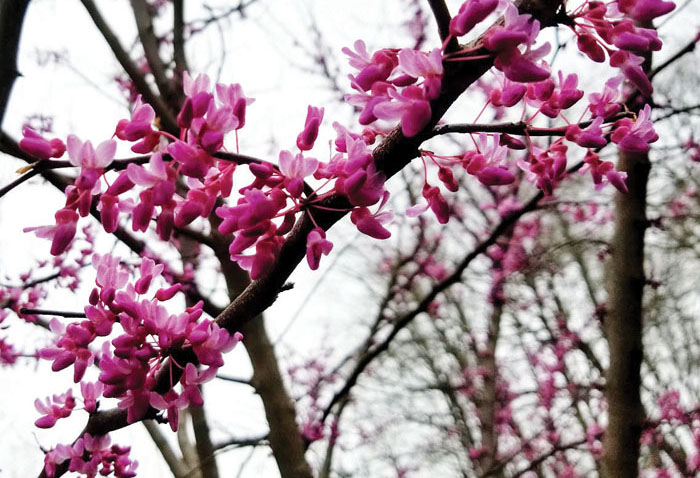Questions about controlling English ivy, fertilizing shrubs
Published 12:00 am Saturday, April 2, 2022

- Redbud blooms
Retail outlets are very busy with customers anticipating the chance to plant flowers and improve their lawn and landscapes. Many have questions about their gardening chores. Below are a few inquiries may relate to your current situation.
When can I mow the leaves off of the spent daffodils?
Answer: It’s not a good idea to mow the leaves of this bulb. The leaves are necessary for the plant to develop flowers for the next season. They will eventually turn yellow and fall over. You can clip or mow them at this time. Bulbs should be fertilized and irrigated to maximize growth for showy blooms.
What can I spray to kill control English ivy?
Answer: English ivy can be quite tolerant of common herbicides such as glyphosate. Studies at N.C. State University revealed that English ivy was controlled by glyphosate (Roundup) when applied in the spring (now). The vines should be actively growing and have new growth with at least 2 to 4 new leaves sprouting. Best control will occur if you use a higher rate of glyphosate with a surfactant. It is very important to have full leaf coverage. Avoid applying herbicides to the point of runoff. It is important to spray now because the later the foliar application, the less effective the control. Studies have shown that late summer and fall applications in North Carolina were virtually ineffective. Go to https://content.ces.ncsu.edu/controlling-english-ivy-in-urban-landscapes for more detailed information on controlling English ivy and other hard to control weeds.
Is now a good time to fertilize my shrubs? I know that lawns are fertilized in the spring, but when do you fertilize trees and shrubs?
Answer: Yes, now is a good time to fertilize your shrubs. Spring is the best time to fertilize because it avoids leaching during the winter. Avoid fertilization in late summer (August) since it may stimulate late-season growth that fails to harden off before frost. Slow-release type fertilizers are becoming very popular because it allows constant release of nutrients slowly all summer for constant feeding. Go to http://content.ces.ncsu.edu/a-gardeners-guide-to-fertilizing-trees-and-shrubs.pdf for detailed information on fertilizing trees and shrubs in the landscape.
I have four redbud trees scattered in my landscape. Most have bloomed this year; however, a few have failed to bloom. Are there male redbud trees that have no bloom?
Answer: No, not really. There are a number of reasons why your trees did not bloom this spring. It can be a number of reasons from over-pruning, drought, poor soils, too much shade, etc. Redbuds are actually legumes that need ample sunlight to produce profuse blooms. Redbuds are also fairly short lived as compared to other flowering trees.
Darrell Blackwelder is the retired horticulture agent and director with the North Carolina Cooperative Extension Service in Rowan County. Contact him at deblackw@ncsu.edu.



